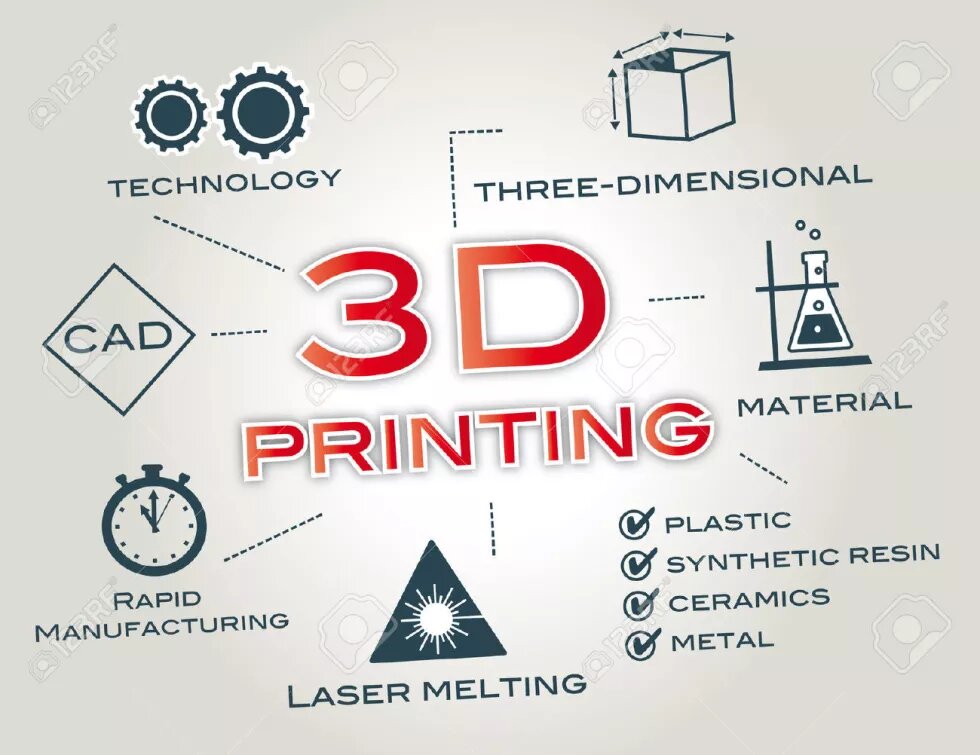
24 May 2016
Gaza (NAWA) - Tamam Muhsin
Since few years, an advanced technique in the world of printing, which is 3D printing, conquered the world and claimed its place in factories and homes, even in space stations.
Statista - the Statistics Portal for Market Data, Market Research and Opinion Research, estimates that 3D printing market, including printing material and relevant services, will achieve sales up to 16.2$ billion in 2019, after it has grossed 3.8$ billion in 2014. Will this fast spreading developed technology find its way to the besieged Gaza Strip?
Mohammad Abu Matar, 29, was determined on manufacturing the first 3D printer in Gaza Strip, using available online design models and his expertise in designing electronic plates.
Abu Matar, who's an electronic plates and devices designer, explained that "during designing electronic boards for a customer, I might need a few parts that are unavailable in the local market in Gaza, or that are difficult to build using traditional ways. So I was thinking if I had a 3D printer it would have been easier".
He adds "importing a 3D printer is not legally prohibited, but that needs coordination and relations with individuals, and I could not do that".
When inquired about the beginning of his work in manufacturing the printer, he answered "the first trials of making the printer were a year ago, I used online designs from the company (Rebrab) until I reached the first prototype, but it was a very old one".
After many trials and experimenting on various designs, totaling a cost of 3000$ he says, Abu Matar met one of 3D printing experts who was visiting the Strip. Abu Matar says “the foreign expert saw the printer but he did not like it, and said it was technologically very old compared to what exists around the world today, and promised to work on supplying the needed electronic parts for an advanced design”.
The Importance of the Printer
The 3D printer is used in different fields including jewelry industry, shoes, industrial design, architecture, engineering, construction, vehicles, airplanes, dentistry, and medical industries.
As 3D printing technology experts expect that it is being used in diverse industries, till this day, aerospace industry is the biggest beneficiary of such technology. As for the Gaza Strip, Abu Matar expects the printer to have a "great future especially under the siege conditions and the constant unavailability of raw material".
He adds "the Strip’s major needs are in the medical field where there are numerous cases of amputation and disability due to war. The printer could be very beneficial in making some parts which aid prosthetics industry technicians to complete their work in the best way possible".
Market and Competitors
Discussing the marketing of the printer in the Strip, Abu Matar clarifies "everyone could acquire the printer at a price that doesn’t exceed 1200$ each. It will facilitate the work of individuals and save time". In the first stage of marketing, he identifies three potential markets for the printer: educational institutions, medicine, and jewelry makers.
As for the competitors, Abu Matar summed up them all saying "any person able to complete his or her work without the use of a 3D printer is a competitor, such as scrap stores owners".
In order to face this enormous sector of competitors, "Abu Matar needs a succinct marketing plan" says Yusuf al-Hallaq, Business Development Officer at Mobaderoon 3 Project (Entrepreneurs 3).
In Mobaderoon 3 Project for supporting youth pioneers, Abu Matar participates with his colleague, Mohammad Lubbad, 21, to benefit from a financial grant to fund his startup under the name '3D Printing Art'.
AL-Hallaq says "Mohammad Abu Matar has a clear vision for after the printer’s production, but needs financial support to fund his experiments, in addition to marketing consulting, project management and dealing with customers".
Inquiring about the future of 3D printing in the Strip, al-Hallaq answers "Gaza is relatively advanced in the field of technology, and is in constant seek to pursue what is new. Furthermore, various industries in the Strip face a growing need for raw materials that could not always be provided due to the siege, and this is what promotes the need for the 3D printer".
Originally published in Arabic on NAWA.PS.